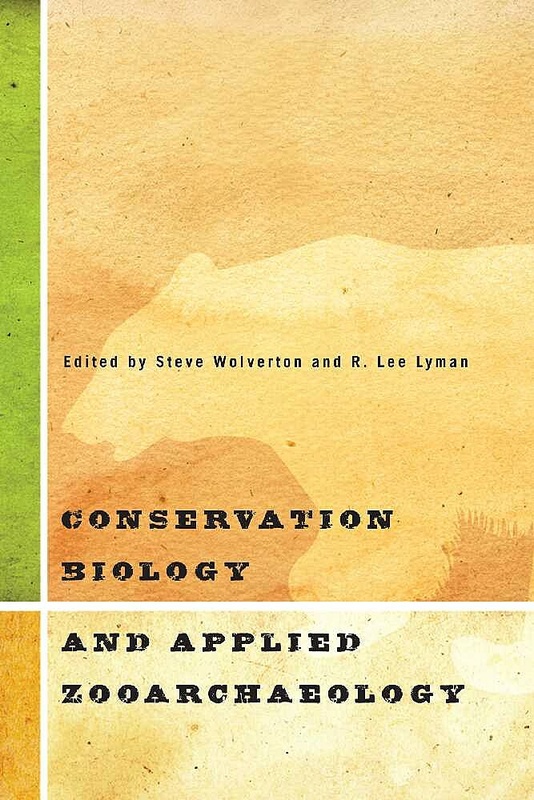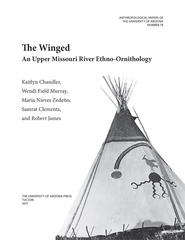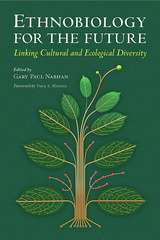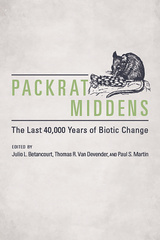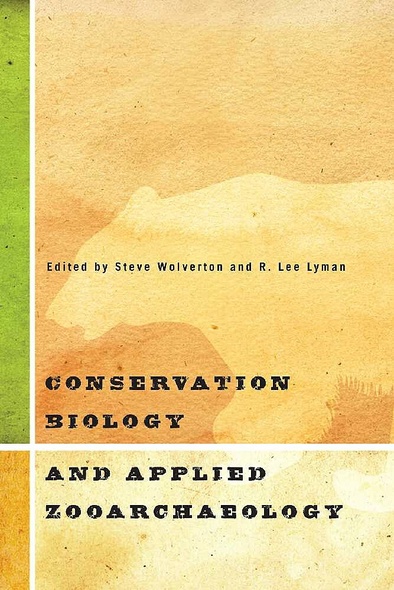
256 pages, 6 x 9
30 illus., 20 tables
Hardcover
Release Date:06 Dec 2012
ISBN:9780816521135
Conservation Biology and Applied Zooarchaeology
Edited by Steve Wolverton and R. Lee Lyman
The University of Arizona Press
Until now, the research of applied zooarchaeologists has not had a significant impact on the work of conservation scientists. This book is designed to show how zooarchaeology can productively inform conservation science. Conservation Biology and Applied Zooarchaeology offers a set of case studies that use animal remains from archaeological and paleontological sites to provide information that has direct implications for wildlife management and conservation biology. It introduces conservation biologists to zooarchaeology, a sub-field of archaeology and ethnobiology, and provides a brief historical account of the development of applied zooarchaeology.
The case studies, which utilize palaeozoological data, cover a variety of animals and environments, including the marine ecology of shellfish and fish, potential restoration sites for Sandhill Cranes, freshwater mussel biogeography and stream ecology, conservation of terrestrial mammals such as American black bears, and even a consideration of the validity of the Pleistocene “rewilding” movement. The volume closes with an important new essay on the history, value, and application of applied zooarchaeology by R. Lee Lyman, which updates his classic 1996 paper that encouraged zooarchaeologists to apply their findings to present-day environmental challenges.
Each case study provides detailed analysis using the approaches of zooarchaeology and concludes with precise implications for conservation biology. Essays also address issues of political and social ecology, which have frequently been missing from the discussions of conservation scientists. As the editors note, all conservation actions occur in economic, social, and political contexts. Until now, however, the management implications of zooarchaeological research have rarely been spelled out so clearly.
The case studies, which utilize palaeozoological data, cover a variety of animals and environments, including the marine ecology of shellfish and fish, potential restoration sites for Sandhill Cranes, freshwater mussel biogeography and stream ecology, conservation of terrestrial mammals such as American black bears, and even a consideration of the validity of the Pleistocene “rewilding” movement. The volume closes with an important new essay on the history, value, and application of applied zooarchaeology by R. Lee Lyman, which updates his classic 1996 paper that encouraged zooarchaeologists to apply their findings to present-day environmental challenges.
Each case study provides detailed analysis using the approaches of zooarchaeology and concludes with precise implications for conservation biology. Essays also address issues of political and social ecology, which have frequently been missing from the discussions of conservation scientists. As the editors note, all conservation actions occur in economic, social, and political contexts. Until now, however, the management implications of zooarchaeological research have rarely been spelled out so clearly.
Steve Wolverton is an associate professor of geography at the University of North Texas. He is an ecologist and archaeologist specializing in the palaeozoology of North America during the Holocene. R. Lee Lyman is a professor of anthropology at the University of Missouri–Columbia. He has published widely on the value of zooarchaeology for conservation biology, including Zooarchaeology and Conservation Biology (co-edited by Kenneth P. Cannon), and other zooarchaeology topics, including quantitative paleozoology.
1 Introduction to Applied Zooarchaeology
Steve Wolverton and R. Lee Lyman
2 Zooarchaeological Evidence for Sandhill Crane (Grus canadensis) Breeding in Northwestern Washington State
Kristine M. Bovy
3 Archaeological Freshwater Mussel Remains and Their Use in the Conservation of an Imperiled Fauna
Evan Peacock
4 Prehistoric Biogeography and Conservation Status of Threatened Freshwater Mussels (Mollusca: Unionidae) in the Upper Trinity River Drainage, Texas
Charles R. Randklev and Benjamin J. Lundeen
5 Ancient Actions Predict Modern Consequences: Prehistoric Lessons in Marine Shellfish Exploitation
Heather B. Thakar
6 The Overkill Hypothesis and Conservation Biology
Lisa Nagaoka
7 Paleozoological Stable Isotope Data for Modern Management of Historically Extirpated Missouri Black Bears (Ursus americanus)
Corinne N. Rosania
8 Rockfish in the Long View: Applied Zooarchaeology and Conservation of Pacific Red Snapper (Genus Sebastes) in Southern California
Todd J. Braje, Torben C. Rick, and Jon M. Erlandson
9 T he Past, Present, and Future of Small Terrestrial Mammals in Human Diets
Karen Gust Schollmeyer and Jonathan C. Driver
10 Applied Zooarchaeology: History, Value, and Use
R. Lee Lyman
About the Contributors
Index

